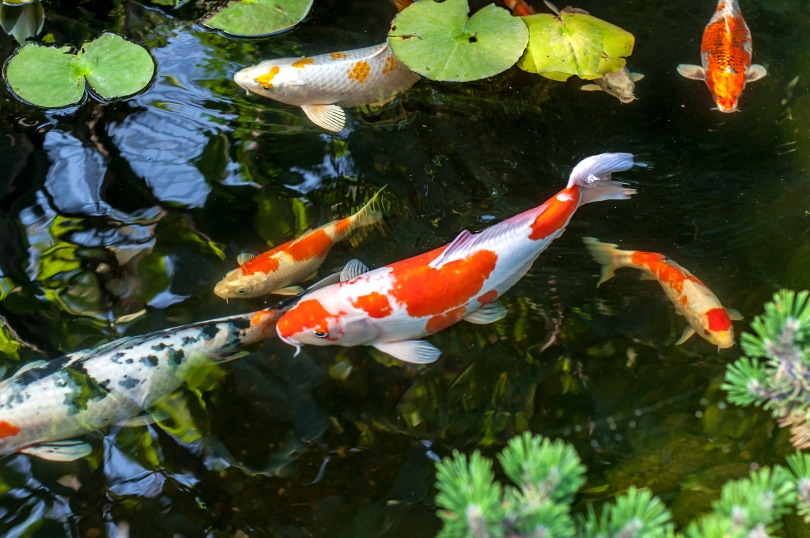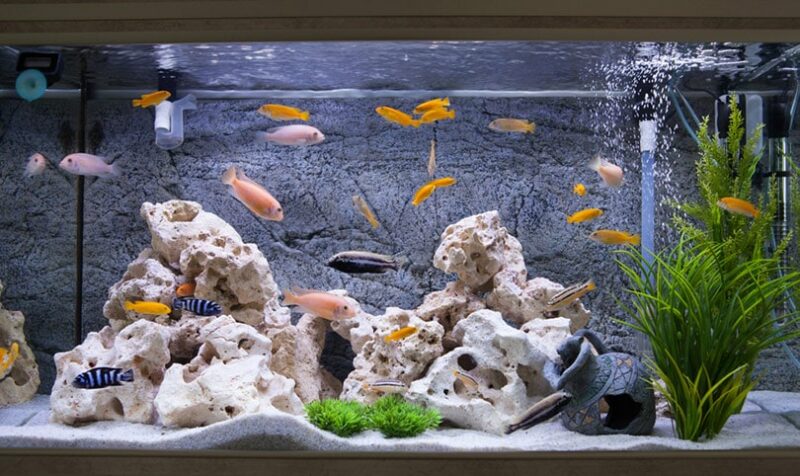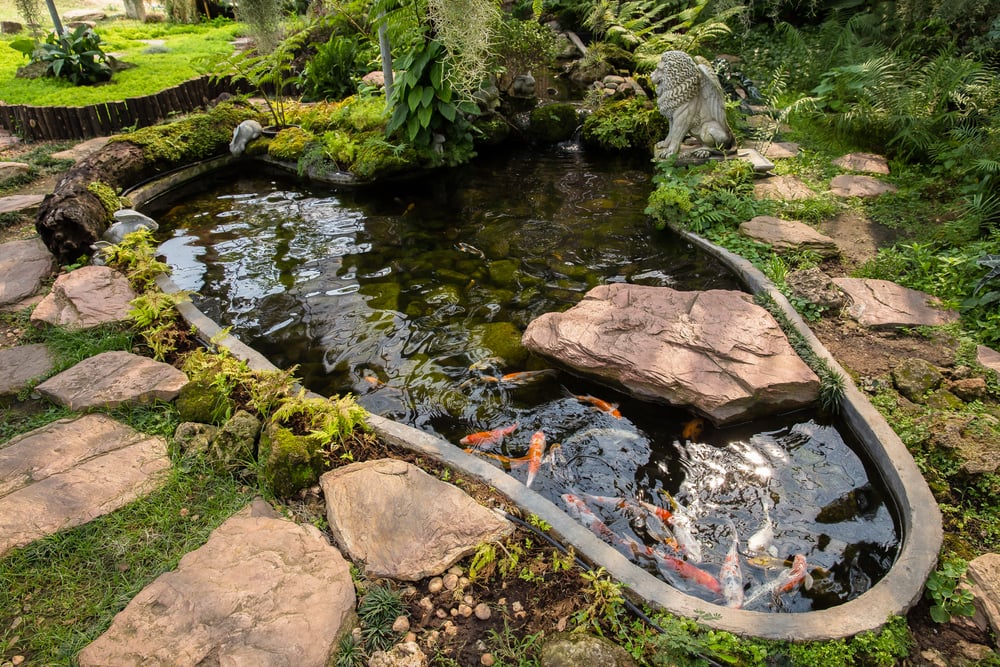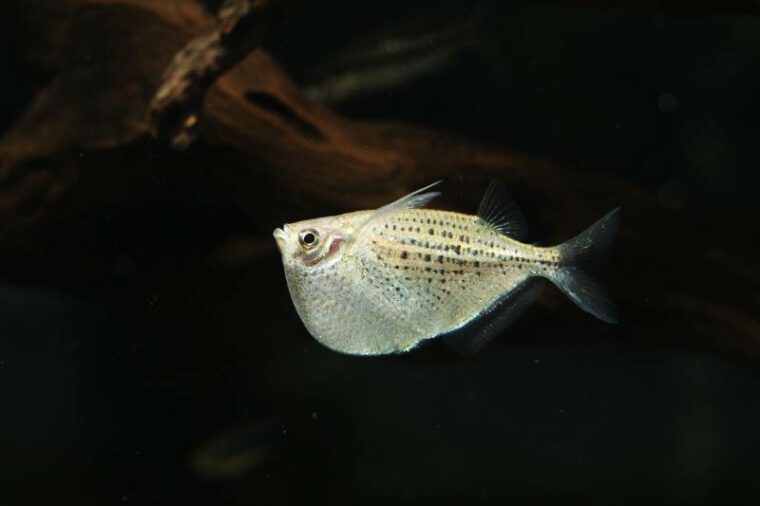
Click to Skip Ahead
The Hatchetfish is an interesting species if just for its unique body shape. Its form comes into play with its behavior and habitat usage. It’s a popular aquarium fish because of these traits, its ease of care, and affordability.
Its color is another factor. A school of these silver, almost iridescent, fish is a sight to behold as they catch the light and shimmer in the water. It’s not a large species, but it has a big presence in the tank that is sure to attract attention.
Breed Overview
| Size: | Up to 1.6 inches long |
| Lifespan: | 2–5 years |
| Similar Breeds: | Tetras, peaceful barbs, guppies |
| Suitable for: | Beginners |
| Temperament: | Peaceful, active, schooling |
Hatchetfish Breed Characteristics
Hatchetfish Fish Cost
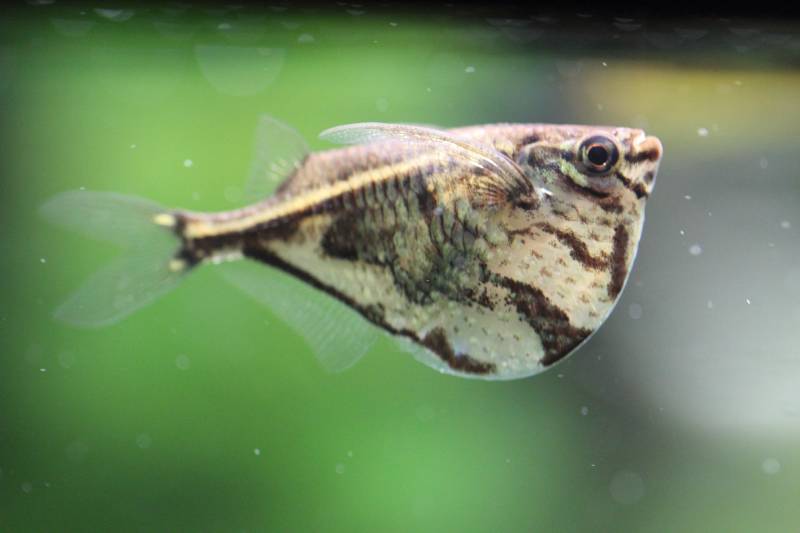
The Hatchetfish is part of the Gasteropelecidae family. The various species inhabit parts of Central and South America. It prefers streams and rivers with lots of vegetation and often in shallow waters. That gives this species tolerance for less-than-ideal conditions.
You can get individual fish for less than $10 apiece. You may catch a deal by buying groups. It’s not the easiest fish to breed by amateurs, although experienced hobbyists and professionals are often successful. Part of the reason may rest with the fact that it’s tied to the rainy season in its native habitat instead of the photoperiod or daylight hours that are common in species of the Northern Hemisphere.
The Sociability of the Hatchetfish
The Hatchetfish is a friendly fish that isn’t aggressive with other community species of a similar temperament. It prefers living in groups, but there are the usual squabbles with cohorts, jockeying for resources and position. Nevertheless, that makes it a popular choice with hobbyists since it plays well with others. This species typically exists in large schools with the security these arrangements provide.
Do These Fish Make Good Pets?
The Hatchetfish makes an excellent pet for many reasons. It is interesting to look at, with its unique shape and activity level. A school will create an attractive display, especially if you complement it with a setup and decor that puts them in the spotlight. Its lifespan is average for a species of its size. However, optimal tank conditions can push it to the end of the spectrum.
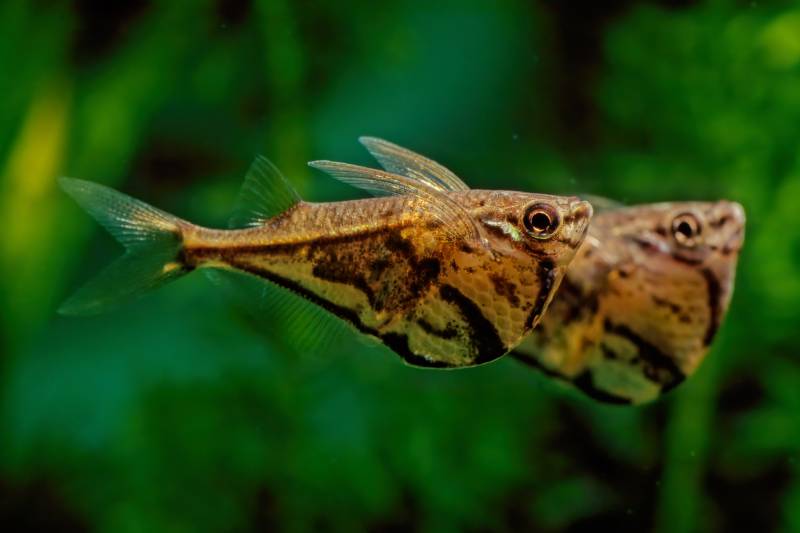
Does This Fish Make a Good Tank Mate?
The Hatchetfish has several factors going for it. Its friendly nature is an element in its favor. This fish isn’t going to chase other tank mates unnecessarily. After all, it’s not very fast, making it less of an opponent to many species. It directs its aggression toward others of its kind, which isn’t unusual since it must compete for resources and mates.
Its body shape is another point in its favor. It’s not like devouring a slender, smaller fish. The Hatchetfish might not be a large fish, but it poses a challenge for some larger species to attack.
Care Guide & Tank Setup
Water Quality, pH & Temperature
The native habitat provides vital clues about what a particular species needs in a tank setup for it to thrive. This fish inhabits rivers with vegetation. That often means acidic water chemistry. Indeed, this species prefers aquariums with a pH between 6.0 to 7.5. That’s something to keep in mind when choosing tank mates and plants.
Its preferred temperature range of 73℉ to 81℉ is comparable to many tropical freshwater species. That gives you some leeway as long as you meet the other compatibility criteria for tank mates. The general hardness of 6 dH to 15 dH is also in line with similar fish. Of course, stability is the foundation of a good aquarium setup since it minimizes stress and disease.
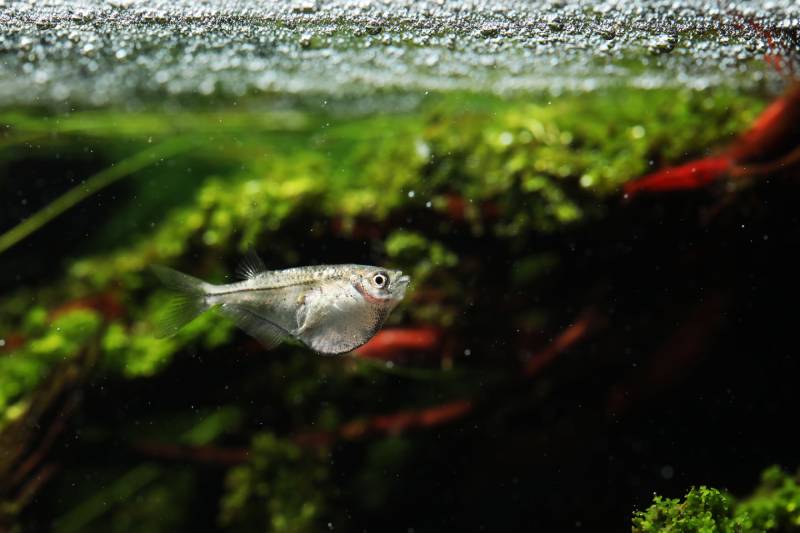
Substrate
The subdued lighting of its natural habitat makes a dark-colored substrate ideal. It will replicate its native conditions and create a more realistic-looking setup for your fish. It’ll also highlight the color of the Hatchetfish and make them pop against this background. Plants are a vital part of your tank, so make sure the size of the gravel is 2 mm to 5 mm in diameter.
Plants
Plants serve three vital purposes for Hatchetfish. First, these fish tend to jump out of tanks. It’s a survival strategy to evade predators. Second, floating plants make it harder for them to get airborne and out of the aquarium. Third, they also provide a habitat for the preferred food of this species, namely, insect larvae. Plants offer cover for a fish that is prey in the wild.
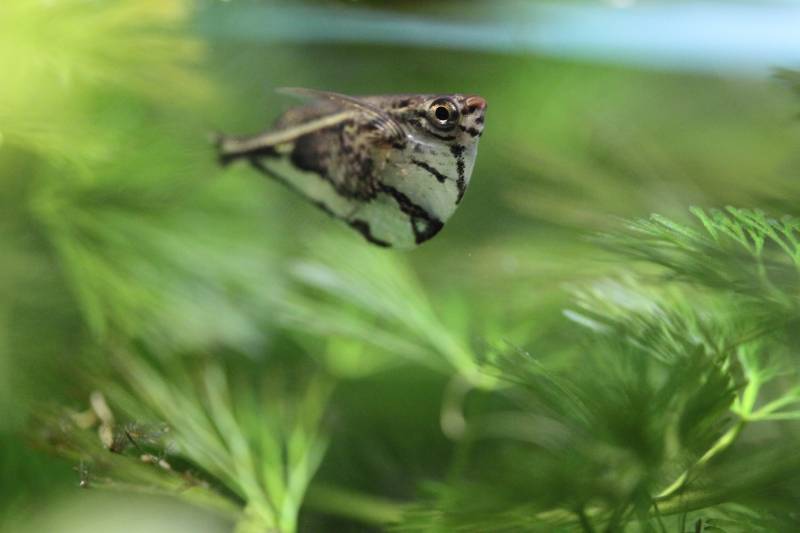
Lighting
Subdued lighting will provide enough UV radiation for your plants to thrive and replicate the fish’s natural schedule in the wild. The light and its associated hood will also offer another way to keep your Hatchetfish inside of the tank with a physical barrier. Ensure that it fits snugly enough to serve these two purposes.
Filtration
Filtration provides stability to a tank and a healthier environment for the fish and plants. It allows for better gas exchange between the surface and the atmosphere. That can increase the amount of dissolved oxygen in the water, which benefits all the aquarium’s residents. A power filter is the best choice to fulfill these needs.
Things to Know When Owning a Hatchetfish:
Food & Diet Requirements
The Hatchetfish feeds on insect larvae. Hence, it hangs out near the surface of the water. In its native countries, it helps control mosquito populations. You can offer your fish high-quality flake food. Freeze-dried bloodworms, cricket, or brine shrimp are excellent additions to its diet. Only give your Hatchetfish enough that it will consume within a minute or two to avoid fouling the water with waste.
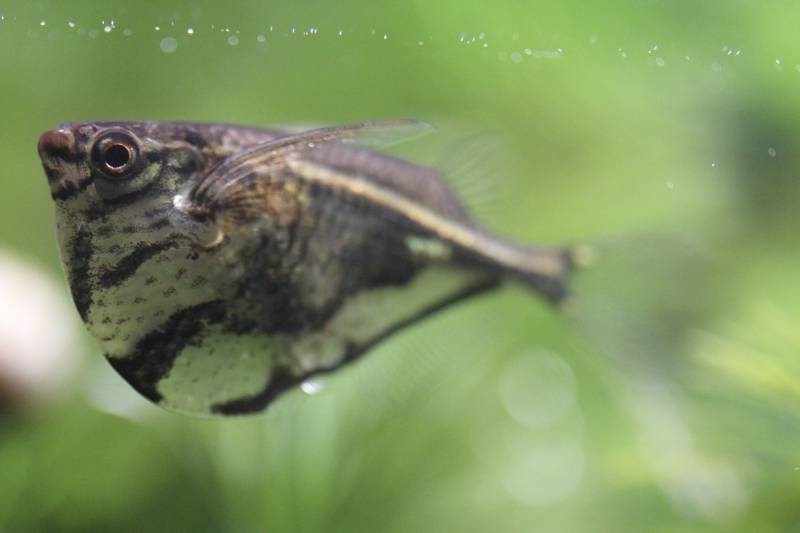
Size & Growth Rate
The Hatchetfish doesn’t grow large, so you’re unlikely to notice significant growth. The fish you purchase may even be already close to the species’ adult size. A high-quality diet will support any future growth.
Varieties
There are no known subspecies of the Hatchetfish, although there are many species that share its name. Our discussion focused on the Common Hatchetfish (Gasteropelecus sternicla)
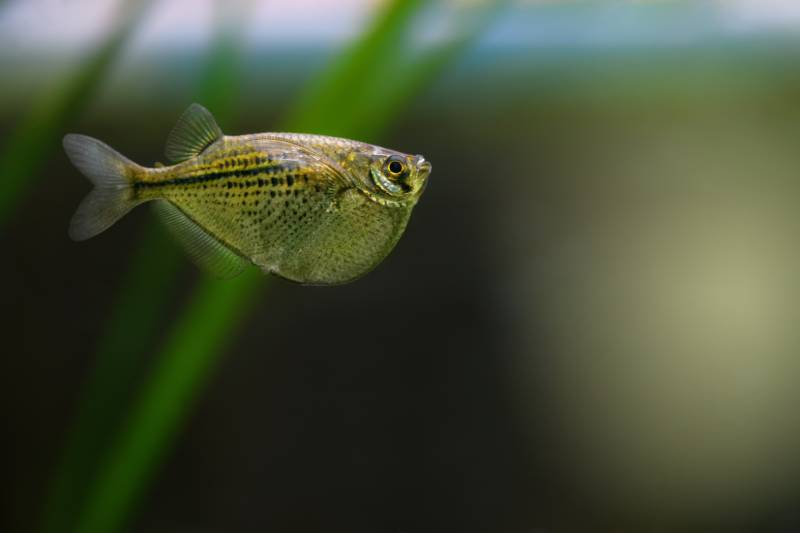
Lifespan and Health Conditions
The Hatchetfish lives about as long as the average tropical fish. The proper tank conditions and a good diet will help ensure it lives a long life. The species is somewhat resilient, given the conditions of its native habitat. However, it’s still essential to keep things stable as it would be experienced in the wild to minimize stress.
Male vs. Female
Hatchetfish don’t appear sexually dimorphic. Both sexes look the same with their silver and black coloration. You may notice some individual variations, but nothing that would denote a female or male necessarily. You may see behavioral differences when the fish are in breeding condition and getting ready to spawn. However, it doesn’t often occur in captivity.
3 Little-Known Facts About the Hatchetfish
1. The Hatchetfish Has Been a Popular Choice for Hobbyists for Over a Hundred Years
European enthusiasts have kept and raised Hatchetfish since 1912. The species didn’t make it across the pond until the 1930s.
2. The Hatchetfish Is a Schooling Fish
The Hatchetfish finds safety in numbers, preferring to live in groups of 10 or more. They make an attractive display as they swim around the tank together.
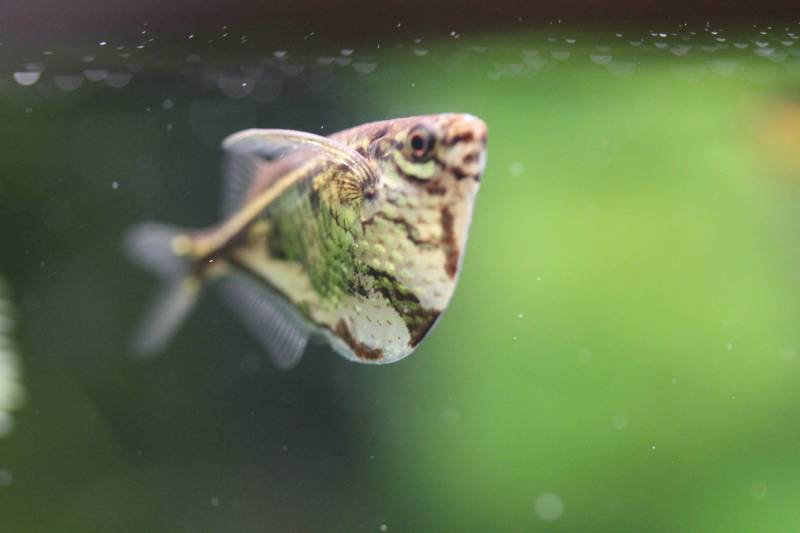
3. The Muscles of the Hatchetfish’s Chest Region Make Up 25% of Its Weight
The unusual shape of the Hatchetfish is compressed, with the bulk of it in the chest and abdominal region. It can jump out of the water, as we mentioned earlier. It is quite muscular in this area, which accounts for the weight distribution.
Final Thoughts
The Hatchetfish is an excellent choice for community tanks with a species that is peaceful and unique. Its penchant for swimming near the surface allows you to plan the use of the aquarium’s space more efficiently. It also means a well-fitting hood to ensure they don’t jump out of it. This species is also easy to care for and will do well in average conditions for a tropical fish tank.
Featured Image Credit: Pavaphon Supanantananont, Shutterstock


